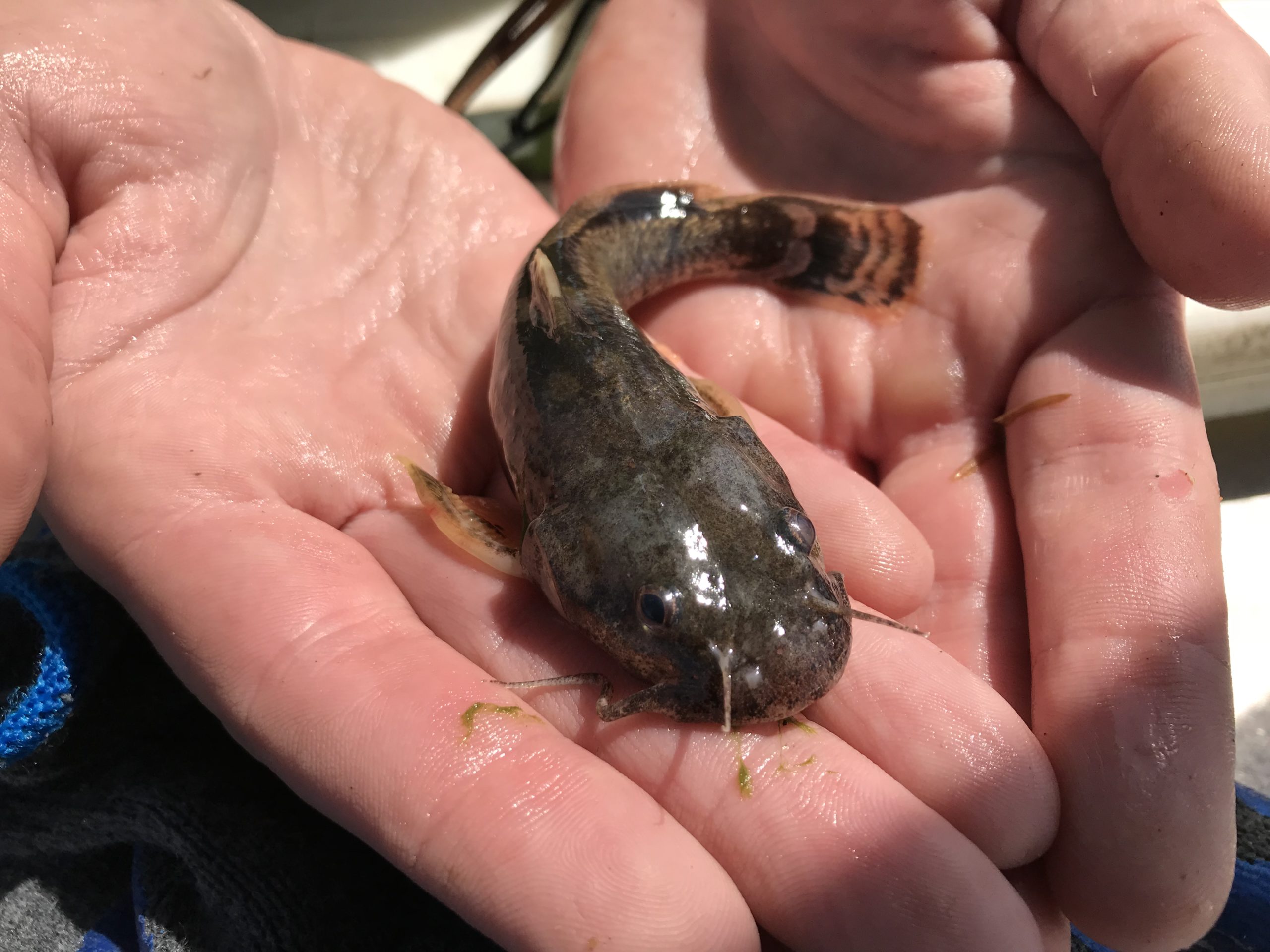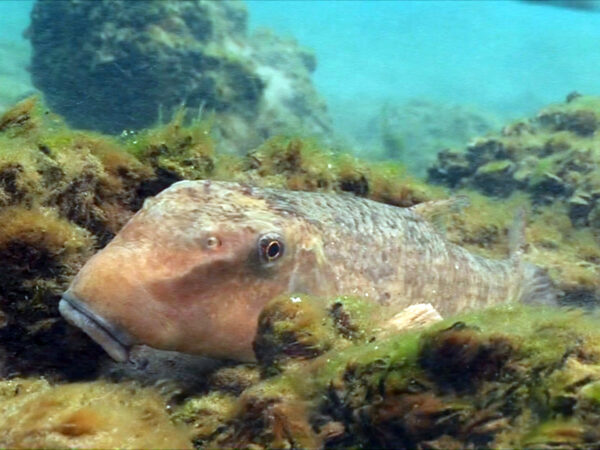
Great Lakes Moment is a monthly column written by Great Lakes Now Contributor John Hartig. Publishing the author’s views and assertions does not represent endorsement by Great Lakes Now or Detroit Public Television.
A small catfish that is endangered in both Michigan and Ontario is making a comeback thanks to improved water quality and artificial reef construction in the Detroit and St. Clair rivers.
Historically, the Detroit and St. Clair rivers supported abundant fish populations. However, like many river systems, these rivers have been affected greatly by water pollution and loss of essential habitats. For example, during the 1960s the Detroit River was considered one of the most polluted in the U.S. Creation of shipping channels, hardening of the shorelines for commerce and industry and other human-caused disturbances resulted in the loss of fish and wildlife habitat and declines in native fish populations.
As water pollution control programs were implemented in the 1970s-1990s, water quality started improving. Fishery biologists concluded in the 1990s that the number of fish produced in these rivers was now more limited by habitat than water quality. Their working hypothesis was that if you build fish spawning reefs, they will come, and the number and kinds of fish will increase.
To test this hypothesis, construction of underwater limestone fish spawning reefs started in the early 2000s. These reefs had a variety of funding sources, including government-NGO partnerships, public-private partnerships and industry settlement obligations. In total, three fish spawning reefs were constructed in the St. Clair River (Middle Channel – 2012; Point aux Chenes and Hart’s Light – 2014) and nine in the Detroit River (McKee Park in Windsor, Ontario – 2003; Belle Isle – 2004 and 2016; Fort Malden in Amherstburg, Ontario – 2004; BASF property along the Trenton Channel – 2008; Fighting Island – 2008 and 2013; Grassy Island – 2015; Historic Fort Wayne – 2018), with an additional one under construction in the Detroit River – Sugar Island.
Fishery biologists have reported that the dozen reefs completed have been successful in improving the fish community.
Monitoring of the 2004 Belle Isle reef after construction was particularly enlightening to these fishery biologists. Monitoring in both 2005 and 2006 showed that 16 species of native fish were spawning on the reef, with three other species using the site, including lake sturgeon and northern madtom.
Northern madtom, a kind of freshwater catfish, is not a fish that many people have heard of. First of all, it is small and grows to only 5 inches in length. And it is not common. It is considered globally vulnerable and is listed as endangered in Michigan and Ontario. An endangered species is an animal or plant that’s considered at risk of extinction.
In Michigan, this bottom-dwelling fish is found large rivers and prefers strong currents with sand, gravel or rocky substrates. The sporadic distribution and small populations of the northern madtom suggest that this species is sensitive to habitat disturbance and has very specific ecological requirements. Little is known about the specific habitat requirements of this species, but increased turbidity, siltation and flow alterations are likely threats.
Fishery biologists believe that the main threat to the northern madtom is habitat destruction. This fish requires clean water in order to survive and can be harmed by pollution and soil that washes into the river from nearby urban and agricultural areas. The apparent absence of the northern madtom on the more polluted Canadian side of the St. Clair River, as well as the more polluted U.S. side of the Detroit River, suggests that it avoids the areas of these rivers with poor water quality.
Therefore, keeping the waters free of sediment pollution and minimizing habitat alterations are considered priority management actions. Maintenance or establishment of natural river flows and vegetated riparian buffer zones along rivers will also help protect this species’ critical habitat. Competition from non-native fish is also a concern to fishery biologists.
So why care about saving endangered species like the northern madtom?
First, it is an indicator species for clean, healthy rivers and other water resources that communities and countless other wildlife species depend on. If the Detroit and St. Clair rivers are cleaner for northern madtom, they are cleaner for you and me because we share the same ecosystem. Endangered species like the northern madtom serve as an early warning sign of serious ecosystem problems.
“I often get asked: what good is biodiversity?” Dr. David Jude, research scientist emeritus at University of Michigan’s School for Environment and Sustainability, remarked. “Who cares about some obscure organism no one ever heard of, be it fish or fungus? Biodiversity is a bellwether of ecosystem health, our canaries in the coal mine, and one of those obscure organisms is a mould called Penicillin chrysogenum. Need I say more?”
Second, while it may seem insignificant that we could lose one small catfish species, it matters because all species, including humans, are connected through their interactions in a web of life. A well-balanced and diverse ecosystem is one in which each species plays an important role and relies on the services provided by other species to survive. A recent research report in ScienceDaily found that extreme environmental change could trigger an “extinction domino effect.” Even the most tolerant species can ultimately succumb to extinction when the less-tolerant species on which they depend disappear. So, saving one species means saving its habitat and the other species that live there too.
Finally, they should be viewed as a bequest to future generations. We should want our children to enjoy the benefits that could be gained from this species, not only of their mere existence, but also any currently unrecognized benefits.
“Every species fills a niche within their ecosystem,” said Jennifer Johnson, fishery biologist with the U.S. Fish and Wildlife Service. “Since we don’t know a lot about the northern madtom, it’s hard to say what special role they play in the Detroit and St. Clair rivers. If we lose the madtoms, the system could end up missing a critical part of the ecosystem, causing it to become more out of balance. Restoring northern madtom populations and protecting their habitat will ensure this globally rare, small catfish continues to persist the in the St. Clair-Detroit River system.”
John Hartig is a board member at the Detroit Riverfront Conservancy. He serves as a Visiting Scholar at the University of Windsor’s Great Lakes Institute for Environmental Research and has written numerous books and publications on the environment and the Great Lakes. Hartig also helped create the Detroit River International Wildlife Refuge, where he worked for 14 years as the refuge manager.
Catch more news on Great Lakes Now:
Great Lakes Moment: Lessons from the Ashtabula River cleanup
Great Lakes Moment: International wetlands treaty turns 50
Featured image: Northern madtom (Photo Credit: U.S. Fish and Wildlife Service)




